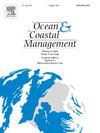海洋空间规划在管理跨界近岸海水污染方面的效果如何?来自中国的准实验证据
IF 5.4
2区 环境科学与生态学
Q1 OCEANOGRAPHY
引用次数: 0
摘要
跨界污染是环境治理的一个主要问题,主要是由于“搭便车”行为造成边界效应,而现有政策往往难以减轻这种效应。虽然广泛的研究已经证实了河流和空气污染中的边界效应,但它们在近岸海水中的存在仍然不确定。此外,海洋空间规划(MSP)旨在通过绘制各种海洋利用活动来解决海洋治理的跨界维度,是否能够缓解边界效应仍不清楚。为了填补这些空白,我们利用近岸海水污染数据来评估中国第三轮MSP在解决跨境环境问题方面的有效性。采用普通最小二乘回归模型对2008 - 2021年中国近岸海水污染的边界效应进行了研究,重点关注了活性磷酸盐和化学需氧量。一个差中差模型被用来评估这一轮MSP对这些边界效应的影响。结果表明,政策并未缓解边界效应;相反,它显著恶化了活性磷酸盐和化学需氧量的水平。利用基于规划方案的评价方法进一步分析了51个沿海城市的冲突和强度值,表明这些值正调节了边界效应。研究结果强调了地理位置对近岸海水质量的重要性,以及跨界海洋区域规划协调以减轻跨界环境风险的必要性。本研究为中国改善近岸海水质量提供了有价值的见解,并为加强MSP提供了经验证据,这适用于环境治理体系分散的地区或国家。本文章由计算机程序翻译,如有差异,请以英文原文为准。
How effective is marine spatial planning in managing transboundary nearshore seawater pollution? Quasi-experimental evidence from China
Transboundary pollution is a main concern in environmental governance, primarily due to “free-riding” behaviors that create boundary effects, which are often poorly mitigated by existing policies. While extensive research has confirmed boundary effects in river and air pollution, their presence in nearshore seawater remains uncertain. Furthermore, whether Marine Spatial Planning (MSP), designed to address the transboundary dimension of marine governance by mapping various sea-use activities, can alleviate the boundary effect remains unclear. To fill these gaps, we examine the third round of China’s MSP, using nearshore seawater pollution data to assess its effectiveness in addressing transboundary environmental issues. An ordinary least squares regression model was employed to identify boundary effects in nearshore seawater pollution in China from 2008 to 2021, with a focus on active phosphate and chemical oxygen demand. A difference-in-differences model was used to evaluate the impact of this round of MSP on these boundary effects. The results showed that the policy did not mitigate the boundary effects; instead, it significantly worsened the levels of active phosphate and chemical oxygen demand. Further analysis using a planning scheme-based evaluation method revealed conflict and intensity values across 51 coastal cities, demonstrating that these values positively moderated the boundary effect. The findings highlight the importance of geographical location in nearshore seawater quality and the necessity of coordination in transboundary marine area planning to mitigate transboundary environmental risks. This study offers valuable insights for China to improve nearshore seawater quality and provides empirical evidence for enhancing MSP, which is applicable to regions or countries with decentralized environmental governance systems.
求助全文
通过发布文献求助,成功后即可免费获取论文全文。
去求助
来源期刊

Ocean & Coastal Management
环境科学-海洋学
CiteScore
8.50
自引率
15.20%
发文量
321
审稿时长
60 days
期刊介绍:
Ocean & Coastal Management is the leading international journal dedicated to the study of all aspects of ocean and coastal management from the global to local levels.
We publish rigorously peer-reviewed manuscripts from all disciplines, and inter-/trans-disciplinary and co-designed research, but all submissions must make clear the relevance to management and/or governance issues relevant to the sustainable development and conservation of oceans and coasts.
Comparative studies (from sub-national to trans-national cases, and other management / policy arenas) are encouraged, as are studies that critically assess current management practices and governance approaches. Submissions involving robust analysis, development of theory, and improvement of management practice are especially welcome.
 求助内容:
求助内容: 应助结果提醒方式:
应助结果提醒方式:


